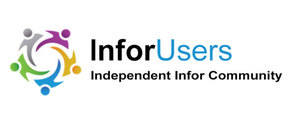The Problem: Making Healthcare Access and Delivery Available to All
Healthcare availability, access, and delivery have been compromised for low-income, minority, and underserved populations for far too long. In many metropolitan areas, citizens are faced with healthcare deserts that dissuade people from seeking healthcare when they are most in need or from maintaining healthcare therapies because of inconvenience. This results in populations of patients that are high risk for receiving needed healthcare services, thus discouraging healthcare providers from extending care to these citizens.
The COVID-19 pandemic exacerbated the chasm between the haves and have nots in US healthcare. Many ethnic minority groups experienced higher rates of sickness and death from COVID-19. Key factors driving healthcare inequity include economic stability, neighborhood and physical environment, education level, food availability, community/safety/social context, and community healthcare systems.
An Altarum report identifies a potential economic gain of $135 billion per year if racial disparities in health are eliminated, including $93 billion in excess medical care costs and $42 billion in untapped productivity. People of color are projected to represent 50% of the US population by 2050, so that is a significant driver in the push to reduce healthcare costs and improve care quality and treatment outcomes for all citizens of the US by the federal government.
As the pandemic has taught us, digital technologies will be a significant foundation for reshaping healthcare services for all US citizens to achieve the quadruple aim of reducing healthcare costs, improving population health and patient experience, and improving the well-being of healthcare teams.
The Solution: A New Alliance to Drive Healthcare Equity
A new alliance was announced on May 19 called the Digital Health for Equitable Health Alliance, which aims to improve health equity through the expansion of digital health innovations. The alliance membership is composed of historically black colleges and universities, patient and physician advocacy organizations, and corporate organizations, all with the unified mission to improve access to care in underserved organizations. The alliance will focus on reducing health disparities for low-income, minority, and underserved populations in the US using digital health. The alliance will promote policies and programs to increase individuals’ access to healthcare by expanding innovations through telehealth, wearables, artificial intelligence, and machine learning.
An example of a company focusing on delivering equitable healthcare services via digital technologies is Amazon Web Services. The AWS Healthcare Accelerator has been established to focus on health equity. The accelerator includes a $40 million commitment that the organization made to support start-up customers that are developing solutions to reduce health inequities. The program will support 10 start-ups with technical, business, and mentorship programs. The start-ups must be US based or have existing operations in the US if they are international. The start-ups will be considered for funding if they focus on one or more areas, including improving access to health services, reducing disparities by addressing social determinants of health, and leveraging data to promote equitable and inclusive systems of care.
The Digital Health for Equitable Health Alliance and AWS Healthcare Accelerator provide great examples for resolving healthcare inequities in the US.
The Justification: Removing Healthcare Inequity Will Improve Social Stability
The current US healthcare system is based on providing care to people who have insurance, and a large portion of our population that does not have Medicare or Medicaid does not have access to health insurance through their employer or simply can’t afford the outrageous cost of current healthcare policies. This population of citizens is predominately represented by minorities in underserved communities that local healthcare providers couldn’t care less about supporting. Emerging digital healthcare solutions where smartphones provide access to symptom checkers can provide diagnostic tools (e.g., cardiac rhythms, voice biomarkers), identify and resolve SDOH challenges, connect people to community health centers, and enable better healthcare for these citizens.
The Players: Many Companies and Organizations with Good Intentions
While the Digital Health for Equitable Health Alliance and AWS Healthcare Accelerator are good examples of how organizations and companies are stepping forward to resolve the healthcare inequity challenge, these programs cannot falter. Failure to deliver tangible and quickly adopted digital solutions to help impacted populations of citizens will result in social disruption. Payers and pharmaceutical companies need to join these efforts.
Success Factors:
- Healthcare organizations should evaluate joining the Digital Health for Equitable Health Alliance to establish strategies for improving healthcare services to their underserved communities.
- Healthcare organizations should prioritize digital healthcare solutions based on their ability to help support both current patient populations and underserved communities.
Providers should identify minority citizens that qualify for Medicaid, enroll them, and use digital health solutions to better manage their healthcare as a starting point.
Summary:
The US healthcare system promotes inequity of care for minority citizens who do not have access to affordable healthcare coverage. Many minority citizens forgo healthcare insurance as it is too expensive, and when they need healthcare, they are many times bankrupted for the services they receive. A visit to an ED for a potential stroke evaluation can easily cost $30,000. This significantly impacts the lifestyle of lower-income citizens who now have additional financial liabilities to contend with.
This is an ethical, moral, and social embarrassment for the US. The pandemic has highlighted the challenges the US has for delivering care equally across all patient populations. While digital health technologies cannot resolve the access-to-care issue (e.g., insurance affordability), they can improve care delivery with lower cost solutions that improve care quality. Digital technologies will be the foundation for virtual care that is likely to provide more affordable services for low-income citizens if we can price that care fairly (e.g., lowest charge master cost).


